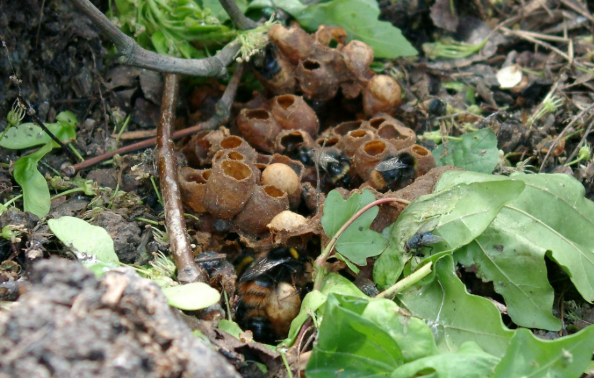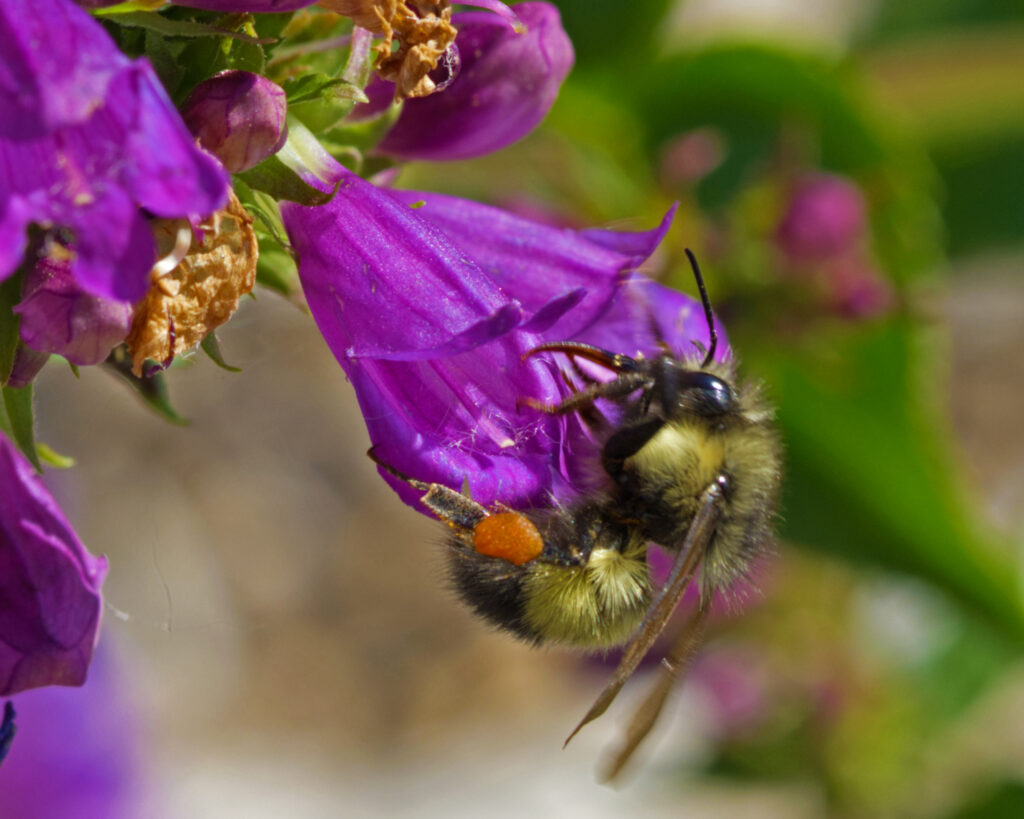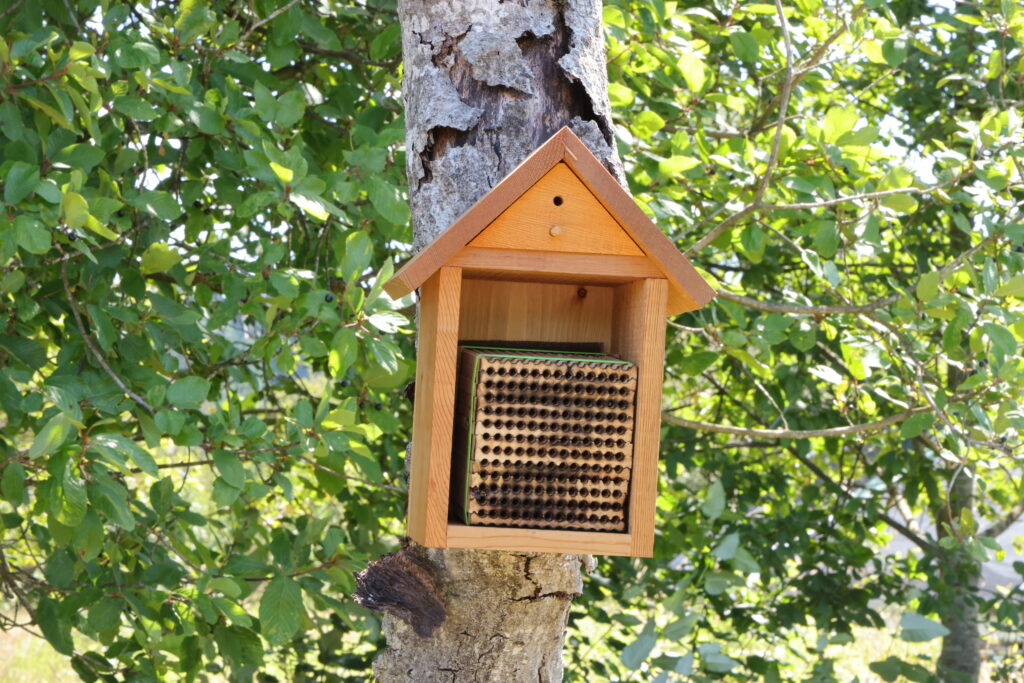Fascinating Bee Facts
There are over 20,000 species of bees in the world, 4,000 of which are native to the United States. The Pacific Northwest has over 600 native bee species that contribute to the food supply and biodiversity of the region.
Bees are the most efficient and effective of all pollinators. Their size allows their bodies to adapt to different flower shapes to access pollen, which clings to their hairs and furry bodies as they travel on their pollination path. They are the number one crop pollinator.
Social Bees live in colonies dominated by a queen bee, who is responsible for laying eggs and reproducing the population in the hive or nest. The most recognized social bee is the honey bee, which lives in large organized colonies with a division of labor. Honey bees can live for generations in the same hive. Honey bees are not native to North America; they were brought over by Europeans in the 17th century. Bumblebees are fuzzy, large bees that have an annual society; the colony dies out in the winter while the queen hibernates. See below for more on bumblebees.
Solitary Bees are a species in which all the female bees are fertile and there is no queen bee. Each female constructs her own nest without any help from the rest of the species. More than 90% of bees are solitary bees. Their pollinating power is astounding. Two mason bees can do as much pollination in an apple orchard as 100 honey bees. Since social bees have no hive or product to protect, they are not likely to sting. Read more about these remarkable creatures.
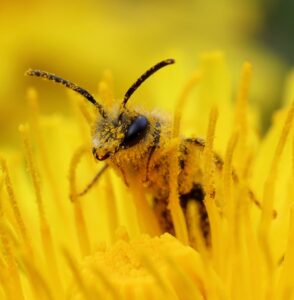
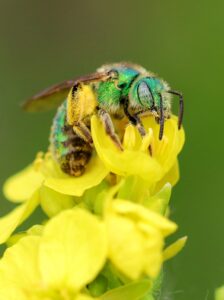
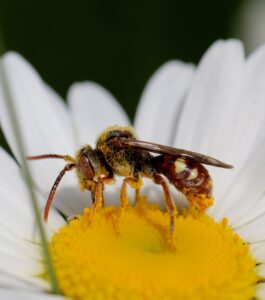
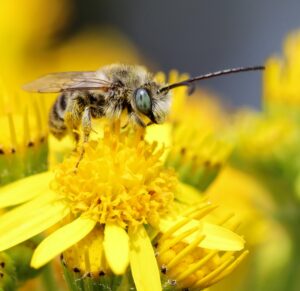
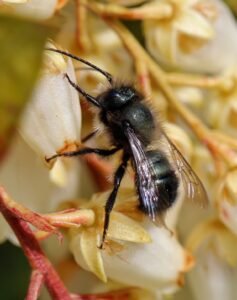
Seven native bees to know in Washington State.
The life cycle of the Mason Bee– very cool video.
Leafcutter Bees – Tiny, mighty summer pollinators.

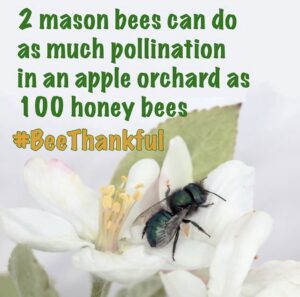
Bumblebees
Bumblebees are among the most prolific pollinators. They have a long pollination season, as they are often the first bees to appear in late winter and can last into late fall. They can be active for so long because they do well in a wide range of weather conditions, including the cool, damp climate of Western Washington. More about bumblebees.
Bumblebees are such effective pollinators because of the way they access pollen. They use a method called buzz pollination which enables them to maximize the amount of pollen they extract from each plant. They produce strong vibrations with their bodies which enable them to capture the stubborn pollen that wants to hang on to the flower.
Many of our native bumblebees are in decline due to pesticides, habitat loss and disease. Washington was the first state to adopt a comprehensive strategy to protect bumblebees. We can do our part by planting a variety of native plants that bloom at different times during the season so bumblebees always have a food source, and by protecting their nesting sites.
Bumblebee Atlas – Join the effort to track and conserve bumblebees.
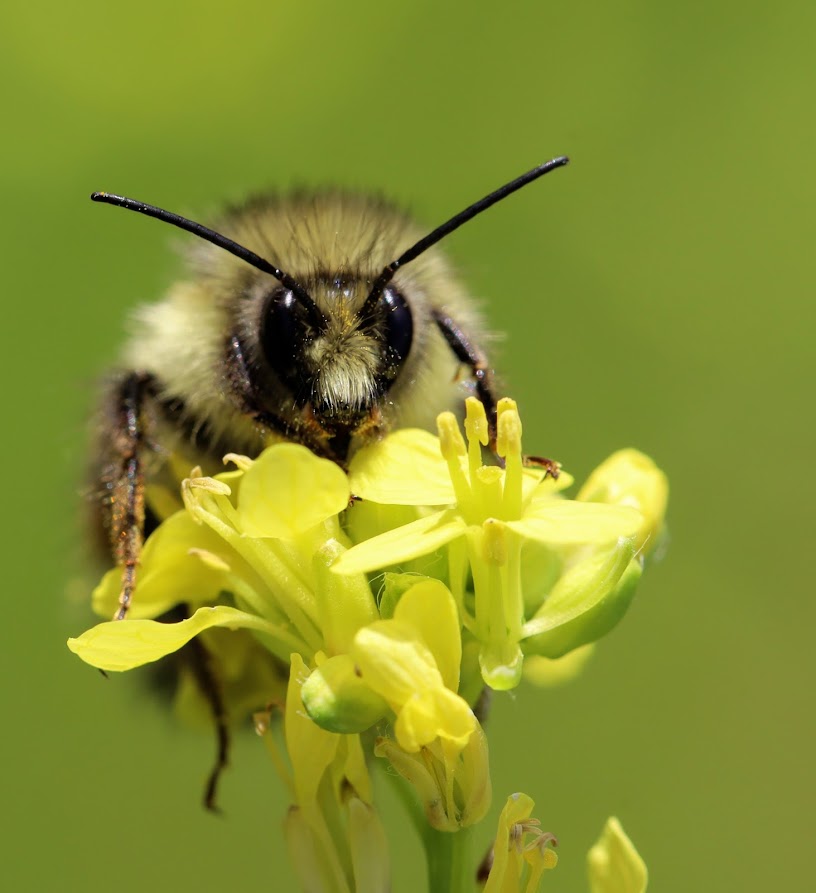
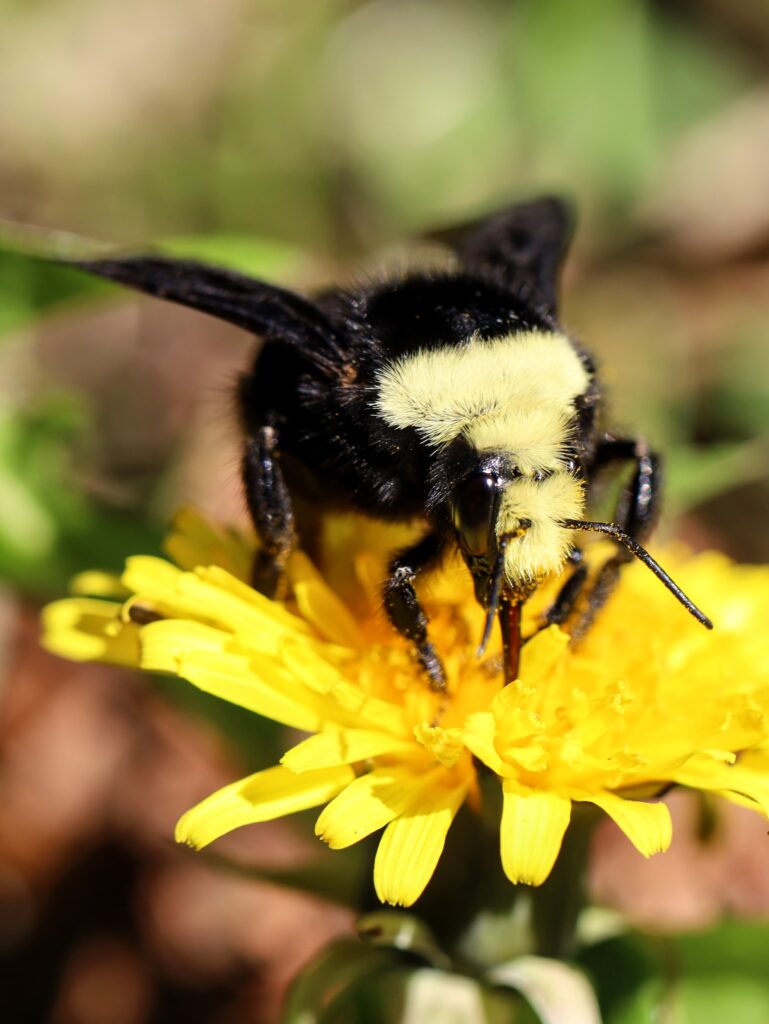
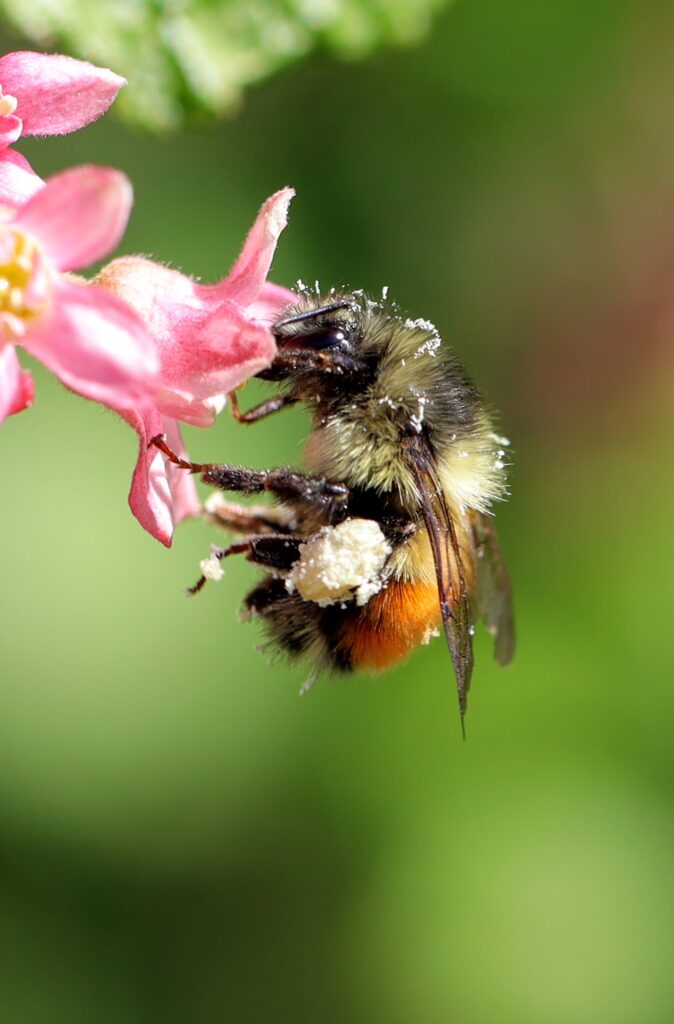
Pacific NW Bumblebees
- Yellow-faced Bumble Bee (Bombus vosnesenskii): A common species with distinctive yellow markings on its face.
- Western Bumble Bee (Bombus occidentalis): Easily identified by a white stripe at the rear of its abdomen.
- Black-tailed Bumble Bee (Bombus melanopygus): Another notable native species.
- Fuzzy-horned Bumble Bee (Bombus mixtus): Known for its prominent fuzzy horn-like antennae.
- Suckley Cuckoo Bumble Bee (Bombus suckleyi): This species has been identified as being at high risk of extinction.
Native Bumblebee Plants
- Agastche – Hyssop
- Carduus – Thistle
- Centaurea – Bachelor’s Buttons
- Chamaenerion – Firewood
- Erigeron – Showy Fleabane – a wild daisy
- Helianthus – Sunflower
- Hypericum – St John’s Wort
- Lupinus – Lupine – many varieties
- Beardtongue – Penstemon
- Rudbeckia – Western coneflower
- Solidago – Goldenrod
- Symphoricarpos – Snowberry
Bee Habitats
Bees are the only pollinators that are ground nesters. Up to 70% of bees nest in the ground in holes in the bare earth. They need exposed, undisturbed dirt in which to nest. Even an inch of woody mulch on the ground will be too deep for bees to nest in. Bees also nest in hollow reeds and stems (raspberries, blackberries, elderberries, hydrangeas). Cavity nesting bees may like beetle holes or woodpecker holes in wood. Help bees by keeping your yard messy!
Bees also need water to drink. Provide shallow water sources, such as shallow bird baths or the drip tray from a pot. Add pebbles for the bees to perch on, as bees cannot swim.
